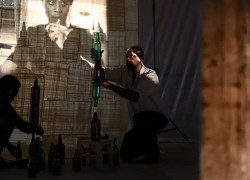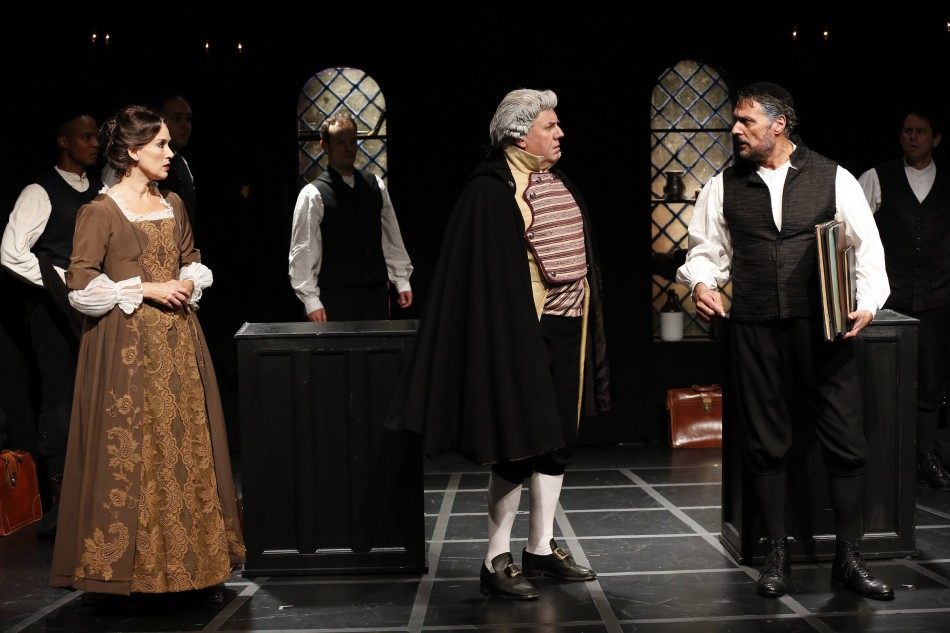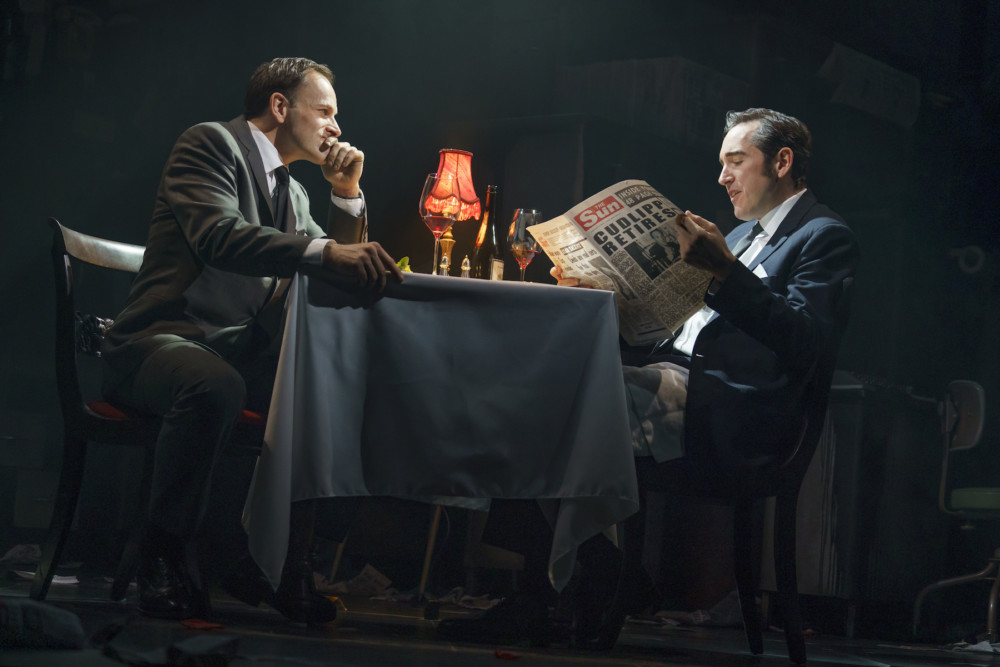Egyptian mourning Rituals find their way into Downtown Manhattan
By Rudy Gerson
Surely, a staged interpretation of 3,000 year old Egyptian funeral rites is an ambitious task, and one that requires a delicate approach in order to honor the sacred so as to not fetishize for entertainment alone. But, the experimental theater artist Kaneza Schall is up to the task in her latest work Go Forth, which captures the holy forces of myth without resting on cliché.
For ancient Egyptians, the afterlife is determined by epic forces. To that end, Schall beautifully captures the tone of such processes by placing the performance in an eerie catacomb — the basement of Westbeth Artist Community.
Located in a room reminiscent of the pipelined torture chambers typical of horror films, Go Forth evokes ancient themes in an underground setting. Through the delicate design of lighting designer Ashley Vellano, the cold arena transforms into a soft, gold temple. Voices boom deep and resonate loud, and audience members will forget they’re located in Lower Manhattan. Coupled with the African-American soul music swooning from worn vinyl records, the space feels altogether quite holy.
While Schall’s father was living in Burundi, he unexpectedly passed away from malaria, which sent Schall on a path of mourning that led ultimately to the creation of Go Forth. Three years of summer research trips across Egypt and residencies across New York City, what results is Schall’s personal exploration into loss fed through the grieving rituals of Ancient Egypt.
Highlights of the piece are the evocative movement from the three central actors — Justin Hicks, William Nadylam, and David Thomson. The three towering figures, donned in robes, oscillate between grace and violence as they glide throughout the space. In a noteworthy sequence, the performers shoot across the room and onto the walls, letting out angst-filled grunts and heavy breath. In a delicate shift, the ensemble comes together and begins to sing a familiar tune — Red Red Wine by UB40.
In another contemporary outburst, the actors cast away their mythic persona and offer beer to the audience, as we are told earlier that that beer is served to the dead in the afterlife. Lights shift, a papyrus backdrop is moved, and all of a sudden the catacomb feels more like a comedy club. The shift in tone, from somber to salacious comes as a jolt. For some audiences, this juxtaposition of the ancient and the contemporary is a relief-giving motif. However, the abrupt transitions may be jarring and cause confusion as the sober formality of Egyptian texts is undercut by profane vignettes.
In all, Go Forth succeeds as a product of one artist’s need to locate her grief in a larger tradition. But having to hold the personal journey within the context of the performance feels like too big a burden.
Performance Space 122’s COIL 2016 Festival, www.ps122.org 155 Bank Street, NYC
Photos: Christopher Myers























